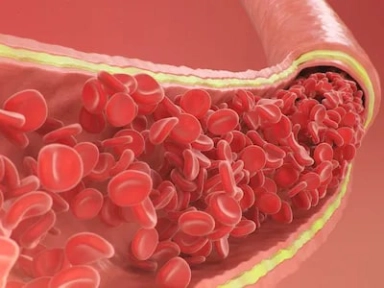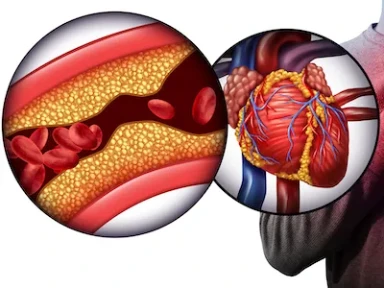{
event: "article_read",
name: `Lipid-lowering therapy and care gap in patients with Familial Hypercholesterolemia`,
author: ``,
tags: `Dyslipidemia | Cardiovascular`,
publication_date: ``,
interaction_type: "content"
}
Lipid-lowering therapy and care gap in patients with Familial Hypercholesterolemia
This post hoc analysis of Guidelines Oriented Approach to Lipid Lowering (GOAL) Canada study suggests that in patients with familial hypercholesterolemia (FH), including those with cardiovascular disease (CVD), there is significant treatment inertia and that greater physician education and support for implementing therapeutic recommendations should be continued in these patients.
Key Takeaway
- There is significant treatment inertia in patients with FH, especially in those who have already developed CVD, despite the pathophysiology of FH and associated cardiovascular morbidity and mortality.
- Better physician education and support for implementation of therapeutic recommendations and serving as a call for action are essential and need to be continued.
- In patients with FH, physician reminders for specific recommended lipidlowering therapy (LLT) led to a significant increase in the proportion of patients achieving optimal low-density lipoprotein cholesterol (LDL-C) level.
- A significant increase in the proportion of patients achieving recommended LDL-C occurred with an increase in the use of recommended non-statin therapy and most remarkably proprotein convertase subtilisin/kexin type 9 inhibitor (PCSK9i).
Why This Matters
- In clinical practice, strategies for lowering LDL-C are often poorly adopted and many patients fail to reach guideline-recommended levels.
- This study explored whether management of patients with FH differed from those with CVD with respect to treatment inertia and care gap in LLT and if therapy optimization is beneficial in these two groups.
Study Design
- The Goal Canada was an investigator-initiated study started in 2015 and coordinated by the Canadian Heart Research Centre, an academic research and education physician organization.
- 750 Canadian physicians across Canada from a Proprietary Canadian Heart Research Centre who participated in prior cholesterol-oriented data collection studies were invited to participate, of which 248 agreed to participate.
- These physicians were requested to consecutively enroll at least 12 of their patients with either (1) clinical vascular disease such as coronary artery disease, cerebrovascular disease, abdominal aortic aneurysm, peripheral artery disease; or (2) FH, as defined in Canadian Cardiovascular Society guidelines
- LLT was evaluated at enrollment (visit 1) and twice more during follow-up, each ~4–6 months apart (visits 2 and 3).
- Medical education intervention comprised physician reminders to follow Canadian Cardiovascular Society guideline recommendations at each visit; physicians were required to provide reason when guidelines were not followed
- Primary end point: Proportion of patients achieving recommended LDLC level of <2 mmol/L in CVD patients and <2.5 mmol/L or ≥50% reduction in FH patients
Key Results
- A total of 177 physicians (58% primary care and 42% specialists) enrolled 2,009 patients (median age: 63 years, women: 42%) with about 50% registered by each physician group.
- CVD only: 52.4%, n = 1,054 patients; FH only: 31.7%, n = 636; both CVD and FH: 15.9%, n = 319
- FH population was younger, more likely to be women, non-White, and had significantly higher baseline LDL-C than CVD population (baseline LDL-C: 3.92 ± 1.48 vs 2.96 ± 0.94 mmol/L, P <0.0001).
- Use of medication in CVD vs FH only: Statin (79.2% vs 70.6%, P = 0.0001); ezetimibe (20.4% vs 28.1%, P = 0.0003); high-intensity statin (58.1% vs 46.6%, P = 0.0001).
- Among patients with FH only achieving recommended target, 45.3% were already at baseline LDL target (≥50% reduction from pre-treatment level or LDL <2.5 mmol/L), which increased to 65.8% and 73.6% by visit 2 and 3, respectively.
- During the follow-up only 22.0% of FH only patients achieved recommended target, compared with 45.8% and 55.2% of CVD only and FH + CVD patients (both P <0.0001).
- Among patients with CVD only, none were at recommended level (≤2.0 mmol/L) at baseline, and 44.3% and 53.3% were at the recommended level on the second and third visits, respectively
- Responses for not prescribing recommended therapy for FH vs CVD only patients: Refusal (38.5% vs 27.2%, P = 0.0008); comorbidities (27.2% vs 18.2%, P = 0.003); additional therapy not needed/management is appropriate (17.4% vs 27%, P = 0.002); prescribe additional therapy at next visit (9.5% vs 18.2%, P = 0.0008); cost (7.4% vs 9.4%, P = 0.30).
Limitations
- This post hoc analysis is subject to physician and patient selection bias, limiting the generalizability of study findings.
- Patient compliance or reasons for non-compliance (e.g., fear of needles) were not assessed, indicating less complete representation of factors contributing to treatment inertia in patients with FH.
- Langer A, Mancini GBJ, Tan M, Goodman SG, Ahooja V, Grégoire J, et al. Treatment inertia in patients with familial hypercholesterolemia. J Am Heart Assoc. 2021;10(14):e020126. doi: 10.1161/JAHA.120.020126. PMID:
Related articles
MAT-KW-2200112/v2/Apr 2022



.webp/jcr:content/Evaluation-of-lipid-management-following-ACS-thumb%20(1).webp)
